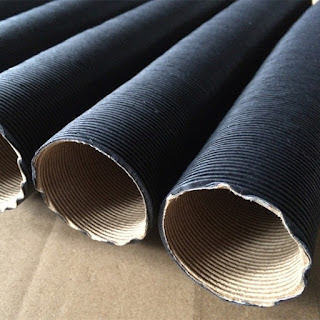What is the purpose of a Pan Graphite Felt?
Understanding Pan Graphite Felt: Applications and Benefits
What is Pan Graphite Felt?
Pan Graphite Felt is a specialized material derived from polyacrylonitrile (PAN) fibers, which are converted into graphite through a series of high-temperature treatments. This process imparts exceptional properties to the felt, making it a versatile component in various industrial applications.
Key Properties of Pan Graphite Felt:
- High Thermal Conductivity: Pan Graphite Felt exhibits excellent thermal conductivity, which makes it ideal for applications requiring efficient heat transfer and distribution.
- Superior Thermal Stability: It can withstand extremely high temperatures without degrading, making it suitable for use in high-temperature environments.
- Chemical Resistance: The material is highly resistant to chemical attacks, which is beneficial in corrosive environments.
- Low Density: Despite its strength, Pan Graphite Felt remains lightweight, which can contribute to reducing overall system weight in various applications.
- Electrical Conductivity: It offers good electrical conductivity, making it useful in applications where electrical performance is crucial.
Applications of Pan Graphite Felt:
High-Temperature Furnaces:
- Application Case: Pan Graphite Felt is widely used in the lining of high-temperature furnaces and reactors. For instance, in the production of semiconductors, it serves as an insulating and protective material in the high-temperature zones of furnaces, where its thermal stability and conductivity are crucial.
- User Experience: Manufacturers appreciate its durability and reliability, noting that it extends the lifespan of furnace components and improves thermal efficiency.
Electrochemical Cells:
- Application Case: In electrochemical cells and batteries, Pan Graphite Felt is utilized for its electrical conductivity and chemical resistance. It acts as a conductive pad or separator in fuel cells and battery systems.
- User Experience: Battery manufacturers highlight its contribution to enhancing cell performance and ensuring consistent energy output.
Thermal Insulation:
- Application Case: The material is used in thermal insulation applications, such as in spacecraft and high-performance engines, where it provides effective thermal insulation while withstanding extreme temperatures.
- User Experience: Engineers find it invaluable for maintaining temperature stability and protecting sensitive components from thermal damage.
Cryogenic Applications:
- Application Case: In cryogenic environments, where extremely low temperatures are involved, Pan Graphite Felt helps in insulation and maintaining temperature stability.
- User Experience: Its performance in these settings is praised for maintaining insulation properties and minimizing heat loss.
Chemical Processing:
- Application Case: Pan Graphite Felt is employed in chemical processing industries, including reactors and distillation units, due to its resistance to corrosive substances and high temperatures.
- User Experience: Chemical engineers report improved process stability and longer equipment life when using this material in harsh chemical environments.
Conclusion:
Pan Graphite Felt is a highly versatile and effective material suited for a range of demanding applications. Its combination of high thermal conductivity, excellent thermal stability, chemical resistance, and electrical conductivity makes it an essential component in high-temperature, electrochemical, and insulating applications. The feedback from various industries underscores its value in improving performance and extending the life of critical equipment. Whether you are involved in high-temperature processing, energy storage, or advanced insulation, Pan Graphite Felt provides a reliable solution for your needs.
 |
| Pan Graphite Felt |



Comments
Post a Comment